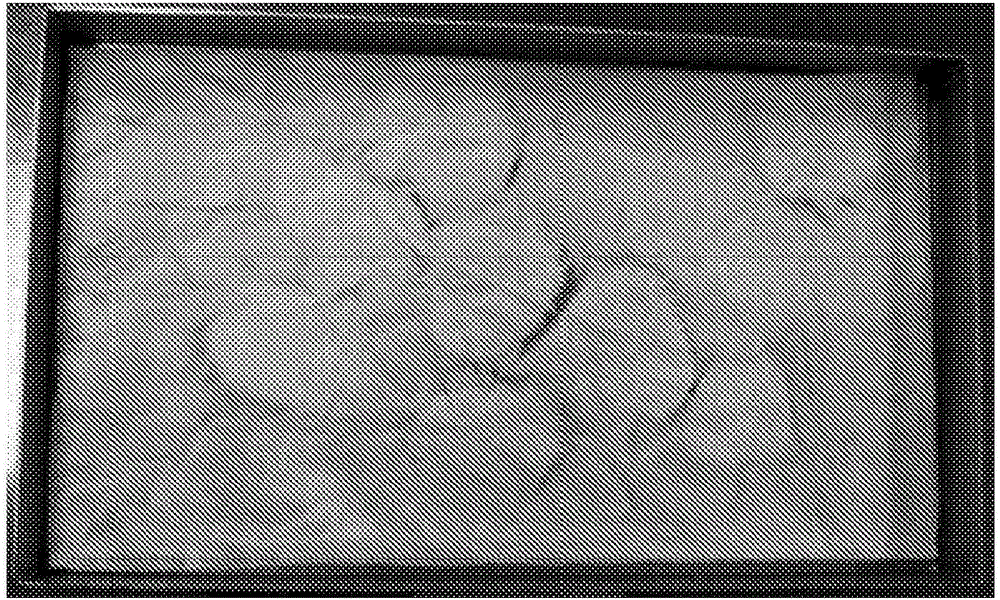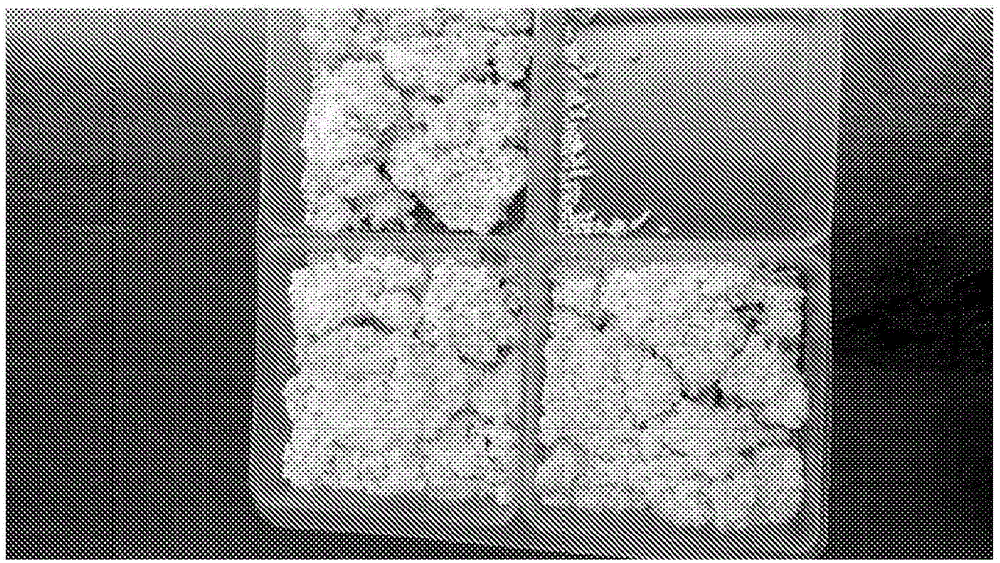Method for producing dried cheese
A manufacturing method and cheese technology, applied in cheese substitutes, dairy products, applications, etc., can solve the problems of increased investment in equipment, changes in cheese quality, and a large number of processes, and achieve the effects of good taste or taste and good crush resistance.
- Summary
- Abstract
- Description
- Claims
- Application Information
AI Technical Summary
Problems solved by technology
Method used
Image
Examples
Embodiment 1~3
[0268] A 1% by mass starch aqueous solution was poured into an aluminum pan (length: 18 cm, width: 32 cm, depth: 3.5 cm). Next, place approximately cylindrical cheese pieces (kind: mozzarella, thickness: 8mm, diameter: about 60mm, moisture content: 55% by mass, specific surface area: about 0.3mm) in this aluminum dish -1 ) to immerse the cheese block in the starch aqueous solution, thereby obtaining a dipping product of the cheese block. Here, regarding the depth of the starch aqueous solution in the aluminum pan, in Example 1, it was set to the depth of the entire surface area of the cheese block, in Example 2, it was set to the depth of half the surface area of the cheese block, and in Example 2. In Example 3, it was set to the depth which immersed only the bottom part of the cheese block (1 / 5 of the surface area of the cheese block was immersed in the aqueous solution depth).
[0269] Then, the aluminum tray in the state of storing the dipped cheese block was directl...
Embodiment 15~19
[0363] In addition to Gouda in Example 15, Cheddar in Example 16, Raclette in Example 17, Mimoret in Example 18, and Parmesan in Example 19 , prepare a test sample in the same manner as in Example 1 (type of cheese: mozzarella), and perform sensory evaluation in the same manner as in Test Example 1 (items: reproducibility of hot water recovery, stringiness, texture and taste) sex).
[0364] The evaluation results are shown in Table 7.
[0365] Table 7
[0366]
[0367] As shown in Table 7, good results were obtained for all cheeses with regard to hot water restorability. In particular, mozzarella, gouda, and cheddar showed good results in all items regarding hot water restitution, stringiness, texture reproducibility, and taste reproducibility.
Embodiment 20~23
[0369] In addition to the above, in Example 20 (kind of cheese: cream), Example 21 (kind of cheese: Cottage Cheese), Example 22 (kind of cheese: mascarpone), Example 23 ( The type of cheese: Processed cheese) except having used further different cheese as a raw material, it carried out similarly to Example 1, prepared the test sample, and evaluated the hot water restorability by the method similar to Test Example 1.
[0370] As a result, all the test samples showed good hot water restorability (score 5).
PUM
 Login to View More
Login to View More Abstract
Description
Claims
Application Information
 Login to View More
Login to View More - R&D
- Intellectual Property
- Life Sciences
- Materials
- Tech Scout
- Unparalleled Data Quality
- Higher Quality Content
- 60% Fewer Hallucinations
Browse by: Latest US Patents, China's latest patents, Technical Efficacy Thesaurus, Application Domain, Technology Topic, Popular Technical Reports.
© 2025 PatSnap. All rights reserved.Legal|Privacy policy|Modern Slavery Act Transparency Statement|Sitemap|About US| Contact US: help@patsnap.com



